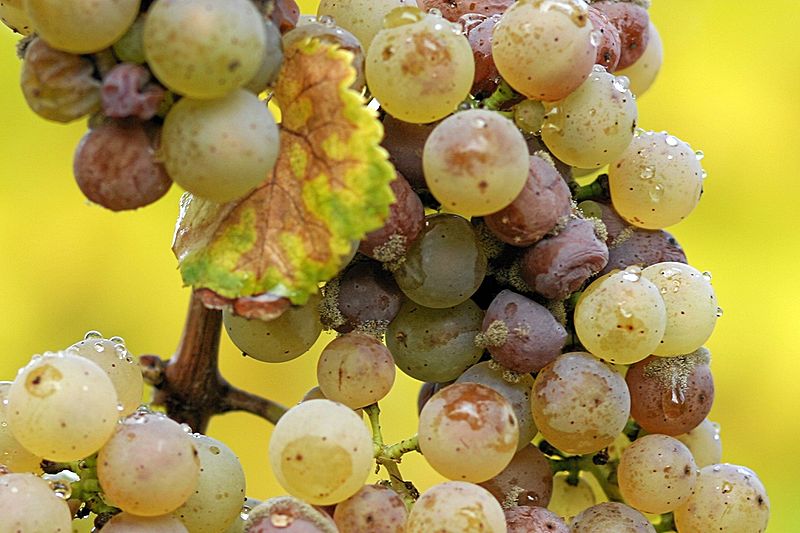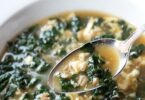Dessert wines are the underappreciated geniuses of the wine family. So much emphasis is placed on what wines pair with your main course that dessert is often overlooked. These wines, however, provide an amazing level of complexity, and can provide the perfect note of balance to the end of your meal. And if you happen not to be much of a dessert person, having a dessert wine for your sweet course can be a great alternative to the profiteroles (even Didier’s can’t always tempt me).
The grapes used in dessert wines range from reds such as Grenache Noir to whites such as Riesling. Sweet wines may be created in a few ways–by growing naturally sweeter grapes (such as Muscat); by fortifying the wine by adding neutral alcohol to stop fermentation (the earlier this addition occurs, the sweeter the wine); or by removing water from the grapes to concentrate their natural sugars (by freezing, air-drying or infecting the grapes with a desiccating fungus). Fungus? Yep, Botrytis cinerea, or “noble rot”, creates phenomenal wines such as those from the Tokaj region of Hungary (Tokaji… pronounced “To-kai”). As an added bonus, this fungus actually imparts honeyed and stone fruit flavors to the wine.

Mmmm. Fungus.
I have three recommendations, each from different winemaking methods mentioned above.
The first is a Sauternes made by the “noble rot”, and is a knock-out. Any time you see this, buy it.

Chateau Lafaurie-Peyraguey 2003.
Gorgeous wildflower honey, ripe apricots, herbs and crème brulée on the nose, with a fantastic palate of baked apple, apricot, honey and an acidic backbone that ties this together. Beautiful dark golden color. Great viscosity to this wine, attributable to the concentration of the sugar. Amazing finish. 60 seconds at least. But what I kept coming back to here is the acidity which beautifully balances the heavy apricot and honey and made this a real winner. Good value on this wine for a 1ère Cru Sauternes, though it is mostly sold in 375 mL bottles, so the prices are deceiving.
Next up is an ice wine from the Finger Lakes region of New York, an area which has produced some stunning results in the past few years, especially in dessert wines. Wagner Vineyards 2007 Riesling Ice Wine.

The color isn’t as rich as the Sauternes above, with a pale, almost straw-yellow hue. The Wagner has a sugary-sweet nose of over-ripe pears, pineapple and spices–almost a little too over-the-top for me. On the palate, though, sweet peaches, pears and caramel were beautifully balanced out by good amount acidity and mineral notes, which really tied the wine together. A surprising amount of structure to this wine, and the finish had citrus notes which made my mouth water.
We’ll round out the choices with a wine created by the fortification process. Chapoutier’s Banyuls 2007:

Wow. Very nice. Made entirely from Grenache Noir, this has a beautiful deep garnet color in the glass. Dark chocolate, dried apricots, Herbes de Provence and cherries on the nose. Powerful, sweet berries on the palate which are complemented out with tangy minerality and a tannic backbone that give the wine good structure and balance. Sweet and rich, yet complex and enticing.
If you’re looking to pair wines such as these with actual desserts, I recommend pairing them with fruit-based desserts, those considered “less sweet” or those which have a higher acid content–like a Sabayon. If you have a dessert whose sweetness is overpowering, it will overwhelm the flavors and subtleties of the dessert wine.
Finally, don’t be fooled into thinking that the sugar content is the only thing to note when it comes to dessert wines, whose sweetness often adds an additional layer of complexity, resulting in different flavors and textures which otherwise may not have been there. Dessert wines can actually be more well-balanced wines–the sweetness can act as an amazing complement to acidity and minerality. And, as an added bonus, desert wines typically have very high viscosity–almost like you’re having a real dessert without the guilt.









YUM!!!!
Great recommendations! Very helpful!!